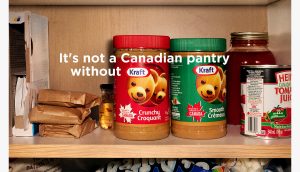By Chris Gairdner
My whole career, clients have been looking for love, specifically brand love. But just like in life, brand love can be hard to define; it can often mean different things to different people and, not surprisingly, it’s elusive for many.
There’s been countless books and studies written about brand love over the years, and everyone’s come up with their own recipe. The way I see it, you can boil the concept down to three of the most powerful brand metrics we measure: desirability, loyalty and advocacy. This can be distilled down further to the behaviour and actions we hope to see from consumers: an urge to support the brand, devotion to it over time and a willingness to influence others to support it.
It’s an emotional (and inherently irrational) relationship that consumers can develop with a brand that leads them to choose its products over competitors of comparable quality and potentially even better value. No wonder it’s appealing to marketers.
Brand love is the sum of every touchpoint and piece of communication a brand controls. Every interaction consumers have with a brand contributes to how they feel about it. Over time these little drops can create a flood, and the brands that have mastered love are riding that wave.
Let’s look at Patagonia. Inarguably a beloved brand for many. It succeeds not just because it has fun aspirational ads featuring surfers and mountain climbers but because its customers enjoy their products, feel sincere admiration for their company values and find real inspiration in their storytelling. If you’re a fan of the brand, everything you hear from it can reinforce your positive feelings. Taken to the extreme, this can even make you feel connected with other people who support the brand.
You can’t create love if people don’t enjoy using the product or service you provide, but you must also stand for something and commit to upholding those values over time. Brands that try to stand for everything seldom have deep relationships with consumers. And brands that stand for nothing except maximizing profits will always have a transactional relationship with their audience.
Now, where do agencies come in? Like any good matchmaker, you need to ensure your clients are delivering thoughtful messages to the right audiences at the right time. So much of advertising is shouting at people, interrupting them or hijacking their attention. It’s lazy and desperate behaviour, and just like in your personal life, it’s unlikely to lead to love. So, aim for relevance and connection instead.
You need to deliver meaningful gestures and memorable experiences, be it by creating compelling brand content, staging an unforgettable experiential activation or surprising and delighting them with an unconventional branded product. You need to get creative and find a way to add value to your audience’s lives. If you can find a way to stand out and surprise them, or support a higher purpose they believe in, then you will earn their attention, and that’s a very good start.
Consider what brands your audience already loves and whether a partnership is possible. Association is a powerful aspect of human psychology, and if you can help connect the brand to one your audience already loves, then you will improve their perception. But be sure to be judicious. Too many partnerships or ones that feel disconnected will make it challenging to parse what the brand stands for. Fewer and deeper partnerships are best. Don’t let your clients be one of those brands who sponsor everything in hopes of appealing to everyone.
Corona’s work in Mexico is a great recent example of a brand that is building powerful associations and taking meaningful actions. The brand not only sponsors Mexico’s national football team, building a connection to the country’s favourite sport, but it also staged a series of Indigenous-language radio sportscasts to help Mexico’s Indigenous population enjoy the games, despite not speaking Spanish. Actions like these are what show audiences what a brand is made of.
Finally, make sure you’re measuring the right things and looking at the big picture. Brand love is scary because it’s hard to quantify, and nobody agrees on its definition. That makes it easy for someone to claim they’re helping when they’re not. Efforts should be judged by their ability to lift the key metrics we discussed above, and the strategy should always look at long-term performance. Unfortunately, “love at first sight” doesn’t apply in the world of marketing.
If you can overcome short-termism, set up the right brand foundations and employ a communication approach that keeps the consumer in mind, they’ll keep you in mind too. Love is reciprocal, and if you and your clients are willing to devote time, budget and effort to making the brand worthy of connection, Cupid’s arrow will no doubt strike in good time.
Chris Gairdner is head of content at Initiative.
























